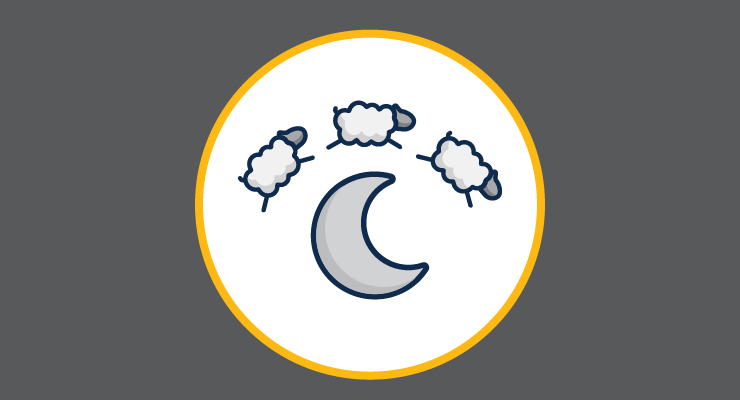(text and background only visible when logged in)

(text and background only visible when logged in)
The sleep environment is simply the space in which you attempt to sleep. In most cases, this means your bedroom. It may vary as our lifestyle dictates.
Features of a good sleep environment:
NOISE
In general, it is easiest to sleep in a quiet place. Noise can be disruptive. Silence or low levels of noise can help for a more comfortable sleep. When you hear noise while asleep, we may not become fully conscious, but it disrupts the deeper stages of sleep. If we are trying to sleep in a noisy environment, our ability to enjoy restful deep sleep will be compromised. It is, therefore, best to try to keep things as quiet as possible.
TIP: Some may benefit from using a white noise machine (or a fan), putting in earplugs, or keeping a radio or television on low volume to drown out outside noises.
TEMPERATURE
Most people prefer to sleep in a slightly cool environment. If you wake up shivering or drenched in sweat, the temperature of your sleep environment is a problem. Consider the temperatures you would experience if you were to sleep outside. The air temperature falls off over night. Similarly, our body temperature dips around 4 a.m. This helps to preserve our energy.
TIP: If you experience insomnia, it can even be helpful to take a warm bath or shower in the hour preceding bedtime as cooling off may help the transition to sleep.
LIGHTING
The amount of light in your bedroom can impact how well you sleep. In general, it is best to sleep in darkness. Our body’s natural circadian rhythm tends to want to follow the natural dark-light cycle. Therefore, even if you are working nights, you should probably try to keep it dark when you are trying to sleep and get some sunlight in the mornings when you wake. Additionally, exposure to artificial screen light may actually keep you awake at bedtime and cause insomnia.
TIP: Power down electronics an hour or two before bedtime to help preserve your ability to fall asleep.
BEDDING/MATTRESS
One thing to consider may be the size and firmness of your mattress. You may prefer only a sheet or mounds of blankets or a thick comforter. Regardless of your options, make sure that your comfort is kept a priority. Don't break the bank thinking that an expensive mattress will solve your sleep problems; check in with a board-certified sleep doctor first to ensure there is not a sleep disorder contributing to your difficulties.
TIP: Find the bedding that is most comfortable for you. This will help you to sleep more comfortably in your environment.
PRESERVING THE SLEEP ENVIRONMENT
The bedroom can sometimes become a multipurpose room, especially if you have space constraints (such as living in college dorms). You may choose to have a television in your bedroom or use your desk for studying. . The bedroom space should be a relaxing place and not a source of stress or stimulation. As part of the general guidelines for good sleep, bedrooms are for sleep and sex, not for other activities.
TIP: Various electronics (televisions, gaming systems, computers, telephones, and other gadgets) should be removed from your sleep environment. Not only will they prevent you from falling asleep, but they may become disruptive at inopportune times and wake you back up.